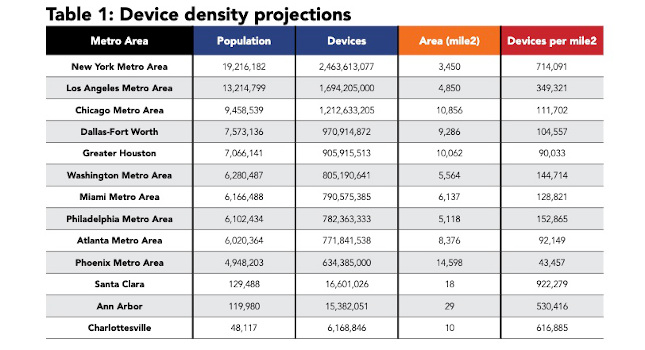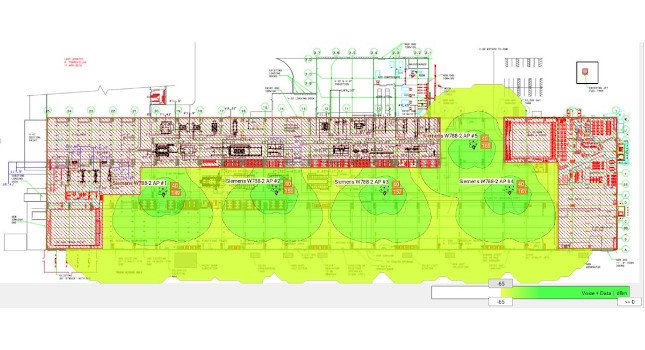With the many instrument and control buses in industry, each claiming to have an open protocol, why do we still have devices and systems that cannot communicate? The reality is, they are all open and they can communicate, but not necessarily with each other. Bill Arnold, Omron Electronics, Schaumburg, IL, defines open protocol: "a technology is 'open' if the development specification is publis...
|
With the many instrument and control buses in industry, each claiming to have an open protocol, why do we still have devices and systems that cannot communicate?
The reality is, they are all open and they can communicate, but not necessarily with each other. Bill Arnold, Omron Electronics, Schaumburg, IL, defines open protocol: “a technology is ‘open’ if the development specification is published, and readily available to any who wants it. Anyone that wishes to do so can develop a product that is compatible with the technology. Open does not mean that everything connects freely to everything else; it means that within a defined set of rules, any one that wants to, can make a product that is compatible with anyone else’s product as long as it conforms to the same set of rules.”
Apples and oranges
Each system is open at various levels. When it comes to instrument and control buses, there is no panacea that solves all applications, because there are so many different applications. Having one protocol to fit the requirements of every application is like going to the grocery to buy bread and being allowed to purchase only one brand of the many available.
It would be inappropriate and inefficient to try to control a valve within a process using BACnet, which is a network developed specifically for automation control in buildings. It would be equally silly to try to control building HVAC and security systems with a musical instrument digital interface (MIDI) control.
The generic term “fieldbus” refers to digital communication networks that connect control systems and field devices. An open fieldbus allows for multivendor compatibility among devices from different manufacturers (Fig. 1). When the word “Fieldbus” is capitalized, it refers to a process industry specification. For example, FOUNDATION Fieldbus is a fieldbus that targets safety-critical applications for the process industry.
On the plant floor, industry has developed a number of fieldbus or device-level networks for linking control devices with increasingly intelligent instrumentation. There is some confusion about what a fieldbus actually is. Device networks typically embrace those optimized for discrete manufacturing automation, while field-type buses typically are more process-oriented instrument networks. On the discrete side, the emphasis is on high-speed transmission of typically smaller information packets. Device oriented fieldbuses include ControlNet, DeviceNet, Ethernet/IP, and others. Process oriented fieldbuses, on the other hand, sacrifice speed for more secure transmission of larger information packets. These include FOUNDATION Fieldbus, HART, and Profibus.
What are the fieldbuses?
There are many fieldbuses, networks, and associated protocols to solve many application problems. Some are listed here:
-
BACnet
-
ControlNet
-
DeviceNet
-
Ethernet
-
Ethernet/IP
-
FOUNDATION Fieldbus
-
HART
-
Profibus
-
BACnet
Building Automation Control Network (BACnet) was developed under the auspices of the American Society of Heating, Refrigerating, and Air-Conditioning Engineers (ASHRAE). It is now an American national standard, a European prestandard, and a potential global standard. The protocol is supported and maintained by ASHRAE Standing Standard Project Committee 135. The rules relate specifically to the needs of building automation and control equipment (Fig. 2). For example, it specifies how to ask for a temperature value, define a fan operating schedule, or send a pump status alarm.
ControlNet
ControlNet is an open, high-speed, and real-time industrial network developed to control time-critical plant applications. It was designed to work in harsh and electrically noisy environments. Its topology is a main trunk line with devices connected to the network with taps. The network’s media redundancy provides a second physical cable, allowing each node to use the best quality signal from either cable.
DeviceNet
DeviceNet is an economical network that connects directly to controllers and industrial devices, eliminating the need for hardwired I/O. It is based on CAN and features fast node response time. The simple topology allows devices to be connected directly to the same network trunk line or cable (Fig 3). Plug-and-play design of some of the devices reduces field redesign or reconfiguration when devices are added or removed (Fig. 4).
Fig. 4. HART field devices connected to control system interfaces can pass continuous real-time diagnostics to higher level systems, such as CMMS and ERP.
DeviceNet was developed by Allen-Bradley. In 1992, Allen-Bradley invited strategic partners and competitors to become DeviceNet members. In 1995, Allen-Bradley turned DeviceNet over to Open DeviceNet Vendors Association (ODVA).
DeviceNet’s bus type was originally master-to-slave using polled and explicit messaging. In 1996, the SystemsSIG group of the ODVA introduced for approval unsolicited messaging, multiple masters, and peer-to-peer communication.
Ethernet
Ethernet was traditionally an intraoffice information technology (IT) connection method. But it is showing up on the plant floor for industrial use. The communication protocol is primarily TCP/IP and can be connected in a variety of topologies.
As industrial networks gain in popularity, Ethernet has been thought of as a potential solution for high-speed communication backbone applications between PCs or workstations and the industrial network. As a hardware technology, it addresses nearly all the requirements of the specialized industrial buses. The additional advantages are widespread usage and lower cost due to higher volumes.
However, Ethernet is “just the cable,” or physical definition and not the protocol itself. Communication methods and protocols on Ethernet are just as numerous as fieldbuses. Popular protocols — TCP/IP for example, handle errors or collisions in ways that can take several minutes to get a message through.
There are applications that require specialized connectivity, such as explosion-proof installations, common wire for signal and power, and optical isolation, to name a few. However the specialized fieldbus-type networks are used at the device level and a gateway converter is used to connect these subnetworks to the larger Ethernet network. Having a single network from the enterprise level to the sensor level gateway greatly simplifies system architecture, design, installation, and maintenance.
Some of the compelling reasons for using Ethernet as the communications backbone from the enterprise-to-sensor gateway are:
-
Ethernet traditionally has been used as the business information backbone and is the de facto network installed in many companies today. Many plants that use Ethernet for business systems can leverage their existing infrastructure for both business and manufacturing automation systems.
-
Ethernet is built into many PCs on the market today. When using PCs to interface to control systems, regardless of where they are in the enterprise architecture, the network interface hardware is already there.
-
Ethernet products are commercially produced in very high volumes. This lowers component costs. Using system components that are available off the shelf means that systems can be commissioned and installed inexpensively, compared to low-volume industrial networks, where most components are specific to the network.
-
However, there are challenges to using Ethernet as a fieldbus network. Some of these drawbacks are:
-
Standard Ethernet today is not completely deterministic. Ethernet depends on data packet collision detection and avoidance that slows down the response of the network as traffic increases. The statistical probability of delays can be lowered when setting up the Ethernet system. Ethernet traffic must be kept significantly below its theoretical limits to avoid collisions. This limits its effective bandwidth.
-
Ethernet is used mostly in office environments. Some fear that the hardware is not rugged enough for industrial applications. However, the growing use of Ethernet in industrial applications has created a market for industrial-grade components.
-
Every node sees all traffic on Ethernet, increasing the probability of data packet collisions. It also makes the performance of any networked application depend on the network usage of other applications. However, Ethernet networks can be configured into separate collision-free domains using Ethernet switches. By using dedicated subnets, industrial network applications are removed from the collision domain of other network traffic, ensuring determinism by eliminating extraneous traffic from critical applications. However, the down side of this is that the low cost of Ethernet components is offset by spending more money for switches.
-
Ethernet/IP
The nomenclature stands for Ethernet/Industrial Protocol. It is a protocol stack that combines commercial off-the-shelf Ethernet with an industrial application-layer protocol such as that used with DeviceNet and ControlNet. Based on transmission control protocol/internet protocol (TCP/IP), it uses TCP for information messaging and user datagram protocol (UDP) for I/O messaging. It provides real-time I/O control by combining both protocols to encapsulate data. Ethernet/IP is designed to handle large amounts of data — up to 1500 bytes per packet — at 10/100 Mbps.
FOUNDATION Fieldbus
FOUNDATION Fieldbus is a bidirectional 7-layer protocol used for communications among field instrumentation and control systems. It meets stringent, mission-critical demands for intrinsic safety and use in hazardous areas and volatile processes. Also, it provides explicit synchronization of control and communication for precise, periodic execution of control functions without deadtime or jitter introduced by communications.
Established in September 1994 by a merger of WorldFIP North America and the Interoperable Systems Project (ISP), the Foundation is a not-for-profit corporation that consists of nearly 120 suppliers and end users of process control and manufacturing automation products. Both FOUNDATION Fieldbus and Profibus PA have a common ancestry in the ISP technology. The block, parameter, mode, and status concepts are very similar for that reason.
HART
Highway Addressable Remote Transducer (HART) uses low-cost interface modules connected to existing 4-20 mA wiring between the control system and field devices (Fig. 5). Communication to field devices includes process information, primary, and secondary variables that actually ride on the 4-20 mA signal lines and are broken out by the individual field devices.
Profibus
Shortened from process fieldbus, Profibus Defines the technical characteristics of a serial fieldbus system with which distributed digital programmable controllers can be networked — from field level to cell level. It is a multimaster system and thus allows the joint operation of several automation, engineering, or visualization systems with their distributed peripherals on one bus.
Profibus is actually three buses — decentral periphery (DP), fieldbus message specification (FMS), and process automation (PA). It was developed by Siemens. However, Profibus is a fieldbus protocol open to those who wish to use the protocol.
The DP Communication Profile is designed for efficient data exchange at the field level. The FMS communication profile is designed for communication at cell level, where programmable controllers (PLCs and PCs) communicate primarily with each other. In this application area, a high degree of functionality is more important than fast system reaction times.
Conclusion
Which fieldbus type to use? They all work. They are all reliable. They all do what they say they will do. And yes, they are open, even though they cannot necessarily communicate with each other.
What it all means is that you should use the technology that best suits your applications. Whether your plant uses factory automation or process controls, there are fieldbuses to fit your need. Competition is blurring the lines of distinction among the available buses. Process-oriented buses are now accommodating discrete control.
Benefits to using a fieldbus type of network for industrial control include significant savings for wire and cabling, installation labor, installation time, configuration time and effort, quick production line changeovers, less troubleshooting time, increased diagnostics, simplified system preventive maintenance, and minimized downtime.
-
-



